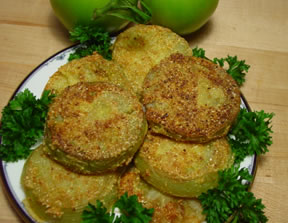October in Bedford is the time of year for the first frost and the first real freeze. As you wind down the growing season, take steps to prepare your vegetable beds for the coming winter. A few easy steps will ensure they are ready for a new round of growth next spring.
Finish Harvesting and Planting
You may have a few vegetables left to harvest in Bedford throughout October:
- Pick any tender crops before they freeze. Harvest green tomatoes.
- Harvest cool weather plants, like greens, Brussels sprouts, beets, carrots and potatoes.
- Gourds can be picked when the stems dry and turn brown. They will need to cure for a few weeks in a dry spot inside.
- Pumpkins are ready when they have full color and the rind is hard.
- If planting garlic, get it in the ground before it freezes for next summer’s harvest.
Clean out Vegetable Beds
Once you are done harvesting crops in the vegetable garden, usually after the first killing frost, clean out the dead plant material. If any plants show signs of disease, dispose of in the garbage. The rest of the plants can be added to compost. By leaving plants in place for the winter, you risk the spread of disease and encourage pest infestations. To make spring chores easier, take time now to pull out as many weeds as you can.
Enrich the Soil
This is also a good time to prep the soil by adding nutrients. If you have compost ready to go, mix it into the vegetable bed soil. If not, get a good, balanced vegetable fertilizer to mix in. Doing this now will ensure the bed is ready to go in spring and that new seedlings and transplants will grow optimally.
Consider Planting a Cover Crop
Another way to prepare the soil in a vegetable garden for the next growing season is to plant a cover crop. Farmers do this to add nutrients to the soil that has been depleted and to prevent erosion. The roots of the cover crop hold soil in place through the winter. They can also suppress weed growth.
Sow cover crop seeds now, after adding compost. In spring, simply turn the crops into the soil. Typical cover crops fix nutrients in the soil. Mixing them into the bed in spring adds even more nutrients to promote good growth for the next crops. Some good options for cover crops are:
- Rye grass
- Oat grass
- Crimson clover
- Vetch
- Forage radish or turnips
- Alfalfa
For best results, use more than one type of cover crop. This will give you a greater variety of nutrients in the soil.
With the beds cleaned, prepped, and covered for winter, all that’s left to do is clean and put away your tools. It’s also not a bad idea to take some notes now on what went well and what didn’t in this year’s vegetable patch. You may not remember by spring. Planning and cleaning now will lead to a more successful garden next year.






